How to Start Collecting Coloured Gemstones: A Complete Beginner’s Guide
October 6, 2025It’s one thing to invest in team building activities, and a whole other challenge, is proving they actually work. ROI can help team building move from a “nice-to-have” for senior leadership to strategic business priority (if they are on the fence).
Start with Clear Objectives
Define success before any event. Do you seek better communication, higher morale or more collaboration? Specific goals make measurement possible.
Track Employee Engagement
Secure measures like a pre-and post-meeting survey to decide employee satisfaction and involvement. Pulse surveys can enlighten you on changes in team synergy, motivation level and workplace happiness..
Monitor Performance Metrics
Examine productivity data before… and after team building initiatives. Are project completion rates improving? Did the quality of work improve? As direct as they come — hard metrics that count with the suits. For Corporate Team Building Activities, consider 270climbing.com/group-activities/corporate-team-building/
Measure Retention and Absenteeism
Businesses bleed from high turnover and regular absences. Measure if team building connects to turnover and less sick days. Hence even small changes can make huge differences in cost savings.
Assess Communication and Collaboration
Go through internal communication tools and project management platforms. Are teams collaborating more effectively? Remember, less issues and smoother workflows are the signs of a stronger team.
Calculate the Numbers
Evaluate your investment in terms of qualitative results — lower turnover, enhanced productivity or improved client relationships. The ROI becomes more undeniable when you can demonstrate that a £2,000 team building day led to an additional £10,000 in turnover costs prevented.
Team building is more than just a good time — it’s an applicable investment in your company.
